Contents
1. Asans (postures)
Asans are of two types, external (for example a seat made of wool, grass, deerskin, tiger skin, etc.) and physical (postures).
Definition: It is the ability to remain seated comfortably in one position for a considerable period of time (स्थिरसुखमासनम् ।) [Patanjal Yogadarshan, 2/46].
Mastery over postures (asansiddhi): If one is able to sit still without any movement for upto half an hour then it is said that one is able to maintain a posture. If one acquires the ability to perform postures for upto three hours then he is said to have acquired mastery over them.
Types: There are eighty-four lakh types of postures, that is as many types as the species of living organisms. Only a few of them have been discussed here.
Postures useful for meditation: Padmasan (the lotus posture), vajrasan (the adamant posture), etc. Meditation becomes easy once one is able to sit still in one place according to the above definition.
Postures used as exercise: Paschimottanasan (the forward stretch), mayurasan (the peacock posture), etc.
Postures for relaxation: Shavasan (the corpse posture), makarasan (the crocodile posture), etc.
1.1 Benefits
A. According to physiology:
As a remedy for illnesses: Postures are useful in illnesses related to muscles and joints, the respiratory system and the heart.
Exercise: For instance with most abdominal postures internal organs are exercised.
The distinctive feature of postures is that, when performing them instead of the body expending energy, it receives exercise. Not only this but when postures are practised, physical energy gets converted into mental energy and one feels refreshed and energetic rather than exhausted.
Relaxation: With some postures like shavasan (the corpse posture) the body gets relaxed.
Purification of the body: If one practises only postures as spiritual practice then the physical body can be purified at the most by 20%. Any other spiritual practice can bring about the same amount of purification. By practising postures the maximum purification that can occur in the various bodies is 7 % in the vital energy body (prandeha), 5% in the mental body (manodeha), 2% in the causal body (karandeha) and 1% in the supracausal body (mahakarandeha). With the Guru’s grace (Gurukrupa) the vital energy body can be purified upto 30% and all the other bodies upto 100%.
B. According to psychology
A reduction in psychological stress: By performing postures 3% of people with mild stress recover and in 2% the stress decreases. The mechanism of reduction in psychological stress is elucidated in the following point.
An increase in concentration and Bliss: The body and mind influence one another. Whenever there is some anxiety in the mind, there is a rapidity of movements of the organs in the body, for example a person is unable to sit still in one place, his heart beats fast, breathing becomes rapid, etc. On the other hand, when the mind is calm, the movements of the organs in the body slow down. Similarly when the body movements are rapid, the mind too runs faster. Contrary to this, the less the movements of the body, the less are the thoughts in the mind. While maintaining a posture since the movements of the voluntary muscles in the body are completely at a standstill, the thoughts in the mind decrease markedly. In short, concentration of the mind increases and one experiences Bliss. Later, when the voluntary organs are brought under control, the involuntary organs too can be controlled. At that time the mind becomes thoughtless. The same concept can be explained in spiritual terminology as : without controlling the organs of action mastery over postures cannot be achieved. Once mastery over postures is gained, the seeker becomes a master of Yoga (yogarudh) and when he becomes a master of Yoga he can control his mind.
C. According to the science of Spirituality
Reduction in the raja component and consequent increase in the sattva component: Movements occur due to the raja component. Thus naturally, when movements are decreased, it facilitates a decrease in the raja component. Hence the proportion of sattva component rises.
Facilitation of clearance of the path of kundalini (spiritual energy): Several postures make the vertebrae of the spinal column strong and flexible. As a result the obstacles in the Sushumna channel running through their cavities are overcome.
1.2 Practical suggestions
A. Learning from an expert: ‘The loss that occurs to individuals, from practising Hathayoga is more than the benefits. For instance people who are underweight should not perform shirshasan (the head stand) and those practising it, should always perform it at the end of a session of postures. Thereafter one should not perform any other postures. After performing all the postures, to overcome the stress and exhaustion which the various bodily organs face, one should remain in shavasan (the corpse posture) for 15 minutes; thereafter practise shirshasan and then repeat shavasan for another fifteen minutes. No matter how skilled one may be in the yogic posture, as a rule, one should never perform shirshasan for more than four minutes.’
B. Avoiding the menace of insects: To avoid the menace of mosquitoes, houseflies, ants, etc. one should use a mosquito net, a fan, insect repellants, etc.
C. Preliminary exercise (warming up): In order to get rid of lethargy and to bring about flexibility, one may do spot jogging or jog for some distance and also perform all types of movements of each of the joints, four to five times. As a result of this it is easier to practise postures. After this preliminary exercise one should perform shavasan for fifteen to twenty minutes and then commence the other postures.
D. Other exercises and postures: A gap of atleast one hour should be maintained between postures and other exercises.
E. Empty stomach: If one has had a light meal (snacks) then for two hours after it or atleast three to four hours after lunch one should not perform postures. One should not eat or drink anything for one hour after performing postures.
G. Bath: Either of the two, bathing or postures may be done earlier. However there should be a gap of atleast half an hour between them.
H. The seat:
In the beginning one should sit on a mat so that the ground will not hurt.
Once one is able to maintain postures, the energy that is not utilised for the activity of the body is liberated and can enter the ground. To prevent this one should use a bad conductor of energy like grass, deerskin, wool, wood, etc. as a seat for the posture. (Saints use wooden slippers to prevent energy loss through the feet). The energy conserved in this way can be used for the purification of channels and to open the Sushumna channel. [Refer ‘Science of Spirituality : Chapter – 38 Path of Activation of Spiritual Energy (Kundaliniyoga).]
I. Direction: While performing postures one should sit facing the east or the north, as they are favourable for physical and spiritual progress.
J. Postures useful for meditation
When practising the posture, one may sit cross-legged. If one is able to sit in padmasan (the lotus posture) or ardhapadmasan (the half lotus posture), then it is ideal. However for those over forty, it is better to pay more attention to meditation than to waste time in mastering padmasan.
If it is not possible to sit with the legs crossed then one may sit leaning back in a chair or may lie down as in shavasan (the corpse posture).
When sitting one should sit erectly. Thus due to uniform distribution of weight on the vertebrae one is able to sit for a longer period.
As far as possible do not lean against anything. However if not possible then one may lean against something.
K. Avoid undue fatigue: One must feel exhilarated after performing postures. One should not practise too many postures such that they will cause fatigue.
L. Experiencing physical discomfort: Initially one experiences discomfort like tingling and numbness of feet, itching, pain, etc.
One should try to bear the discomfort.
If the discomfort is severe, then one may perform the postures for five minutes to begin with and gradually increase the duration.
Initially in order to distract the mind from discomfort one should perform postures while watching television, listening to the radio or during conversation. After a few weeks no discomfort is experienced.
M. Women and postures: One should not perform postures during menses and also from the fifth month of pregnancy till three months after delivery.
N. Meditation on chanting (japadhyan): Once one is able to maintain a posture, to keep the mind occupied in something, in the beginning one should do chanting and thereafter when one makes progress in postures one must meditate. During that time, therefore one can do chanting or meditation and one need not find separate time for them.
O. The timetable for daily practice: The following table gives the types of postures and their duration if one wishes to practise postures daily for 30 or 60 minutes.
| ‘Types | Number | Duration (Minutes) | |
| 30 | 60 | ||
| A. Warming up exercises | |||
| 1. Jogging or spot jogging | 2 | ||
| 2. Bending forward and backward | 10 | 1 | 1 |
| 3. Twisting the torso | 10 | 1 | 1 |
| 4. Back stretch, forward stretch | 10 | 1 | |
| Shavasan (corpse posture) | 2 | ||
| Agnisar (expiration in uddiyyan) and nouli (abdominal corrugator) |
3 | ||
| Suryanamaskar (solar bent posture) | 3 | 6 | |
| B. Postures | |||
| 1. Ardhakatichakrasan (side stretch) | 2 | 2 | |
| 2. Ardhachakrasan (half wheel posture) | 0.5 | 0.5 | |
| 3. Padahastasan (leghand posture) | 1 | 1 | |
| 4. Parivrutta trikonasan (reverse triangular posture) |
2 | ||
| 5. Pashchimottanasan (forward stretch) | 1 | 2 | |
| 6. Suptavajrasan (adamant posture) and ushtrasan (camel posture) |
0.5 | 1 | |
| 7. Yogamudra and shashankasan (rabbit posture) |
2 | 2 | |
| 8. Ardhamatsyendrasan (semi-master fish posture) |
2 | 2 | |
| 9. Mayurasan (peacock posture) | 1 | ||
| Relaxation in shavasan | 3 | ||
| 10. Bhujangasan (serpent posture) | 1 | 1 | |
| 11. Shalabhasan (grasshopper posture) or Dhanurasan (bow posture) |
0.5 | 0.5 | |
| 12. Sarvangasan (shoulder stand) and repetition in reverse order |
3 | 3 | |
| 13. Halasan (plough posture) | 2 | ||
| 14. Matsyasan (fish posture) | 1 | 1 | |
| Relaxation in shavasan | 4 | 4 | |
| 15. Shirshasan (head stand) | 2 | ||
| Repetition of shavasan | 6 | ||
| C. Pranayam | |||
| 1. Kapalbhati | 60 | 0.5 | |
| 120 | 1 | ||
| 2. Nadishuddhi (purification of channels of spiritual energy) |
9 | 2 | 2 |
| Chanting of ‘Om’ thrice | 1 | ||
| D. Moun (silence) | 2 | 2 | |
| Prayer | 2 | 2 | |
| Total duration (Minutes) | 30 | 60’(1) | |
1.3 Absorbing the sweat in one’s body
One school of thought advocates that one should not sweat while practising postures whereas the other says that the sweat should be absorbed in the body for the following reasons.
Everything has originated from Brahman (God) and man too was created from It. Since one has to go from man to Brahman again he has to do everything in the reverse manner for example shirshasan (head stand), take in water through the anus, take in urine or semen through the penis, vomiting, similarly absorbing sweat back into the body, etc.
Sweating is a function of the apan vital energy. Absorbing sweat back into the body is contrary to the action of apan. Hence it becomes possible ‘to combine pran and apan vital energies (प्राणापान समायुक्तो)’- Shrimadbhagvadgita 15:14.
1.4 Who should not practise yogic postures?
The postures contraindicated in various conditions (for instance a person suffering from cervical spondylosis should not practise shirshasan) are given in books on yogic postures.
‘In the science of Yoga who is a learned fool?
The one who practises postures (asans), pranayam, etc. without following the restraints (yam) and regulations (niyam).’(2) The same tenet is also applicable to those practising only postures. [Yam and niyam are the first two parts from the Ashtangyoga (Eightfold Yoga) of Patanjali and are related to the mind. Refer ‘Science of Spirituality : Chapter 36 – Path of Meditation (Dhyanyoga)’.]
1.5 Comparison with other paths of Yoga
Postures (asan), bandha, mudra and keval kumbhak: From the spiritual point of view postures, bandhas and mudras are hardly of 0.l% importance in comparison to keval kumbhak (spontaneous cessation of breathing).
2. Bandha
Origin: The word bandha [बन्ध् (bondage)] is derived from the root word bandha [बन्ध (to tie)].
Definition: A bandha refers to stoppage of flow of the vital energy (pranshakti) in one of the channels, by obstructing it.
2.1 Effects and significance
When the supply of energy to an organ is reduced with a bandha it helps to decrease the desires of that organ.
When the vital energy flowing through one channel is stopped, it changes its path of flow, that is flows through another channel. For example when the triad of the bandhas, jalandhar bandha, uddiyan bandha and mulbandha is performed, the vital energy flowing through the Ida and Pingala channels starts flowing through the Sushumna, that is the energy flows upwards. This is elaborated in ‘Science of Spirituality : Chapter 38 – Path of Activation of Spiritual Energy (Kundaliniyoga)’. ‘In the science of Hathayoga some bandhas which are a type of postures have been described. They are yogabandha, mahabandha, mahavedha, uddiyan, mulbandha, jalandhar bandha, etc. During kumbhak (breath holding) one needs to close some of the openings from among the nine (navadvar) in the body. These yogic bandhas are very useful for that purpose. Bandhas are also useful for drawing vital energy from a specific part of the body and for stabilising it in another. The study of bandhas is necessary if one wishes to acquire mastery in pranayam.’(3) If kumbhak is practised without a bandha, ailments such as headache, abdominal distension, etc. can develop.
If a bandha is practised prior to practising kumbhak in pranayam, the kumbhak can be effectively practised for a longer duration because though no oxygen enters the body at that time, due to the bandha, the stored energy is utilised in the required place.
2.2 Types
A. Mulbandha: Here contraction of the anus is done for as long as possible sitting in sahajasan (the ease posture), padmasan (the lotus posture), etc. Due to the contraction there is pressure on the Muladhar chakra which helps to activate the kundalini (spiritual energy). According to the Gherand Sanhita (3/12, 13) mulbandha is practised in the following manner: The centre of the part between the anus and the sex organ is pressed with the left foot. The right foot is then placed over the sex organ. Thereafter the anus is contracted and the navel is drawn in. This bandha can be performed during various activities such as inspiration, breath holding, expiration, chanting The Lord’s Name, etc.
B. Uddiyan bandha: This word is derived from ut (उत्) and di (डी). The meaning of the root di is to fly. This helps the kundalini to ascend (fly) hence it is known as uddiyan bandha. Here the abdominal muscles are contracted inwards as much as possible for a maximum period of time. After practising kumbhak in expiration, this bandha is practised before inspiration. The uddiyan bandha changes the downward velocity of the apan vital energy and unites it with the pran and saman vital energies. As a result the dormant kundalini is activated and the udan vital energy helps the pran or kundalini to ascend through the Sushumna channel.
C. Jalandhar bandha: After breathing in, the chin is kept pressed to the chest for as long as possible. Consequently the energy flowing in the Ida and Pingala channels stops. In this bandha the vital energy cannot go below the Vishuddha chakra.
D. Tribandha: The triad of bandhas. Here the three bandhas mulbandha, uddiyan bandha and jalandhar bandha are performed simultaneously. Tribandha is also known as bandhatraya.
E. Mahabandha: ‘With the left ankle, pressure should be exerted on the anus. Subsequently the right ankle should be placed over the left.The jalandhar bandha should be performed after contracting the perineum.’ (Gherand Sanhita 3/14, 15).
2.3 Who should not practise bandhas?
If one is suffering from piles, fissures, etc. one should not practise mulbandha. Those suffering from peptic ulcer should not practise uddiyan bandha. In case of cervical spondylosis one should not practise the jalandhar bandha. One should not practise postures or bandhas without the guidance of experienced teachers of Yoga as it could be harmful.
3. Mudra
3.1 Origin and meaning
Mud (मुद्) means to impart Bliss. This is the root from which the word mudra (मुद्रा) is derived. The word mudra has two meanings viz. a symbol (e.g. abhaymudra – the sign of protection) and an act of imparting Bliss.
‘According to the spiritual practice and sects, mudras acquire various meanings.
The specific configuration of hands, feet, fingers and other parts of the body is known as a mudra. For example dhenumudra (mudra of the cow), ghantamudra (mudra of the bell), bhusparshamudra (mudra of touching the ground), abhaymudra (mudra of protection), etc.
The symbols of the instruments of Lord Vishnu such as the conch, discus, etc. sported on their bodies by Vaishnavites are also known as mudras.
The glass or crystal earrings worn by ascetics (sadhus) of the Gorakh sect.
Those practised in Hathayoga: Bhuchari, khechari, chachari, agochari, etc.
In secret tantrik spiritual practice, the woman who has sexual relations with a seeker posing as the companion seeker. (In the Tantra sect other mudras are also important.)
Certain postures of the hands adopted in dance, drama, sculpture are known as ordinary mudras.’(4) The science of dance was created by taking words from the Rugveda, music from the Samaveda, mudras from the Yajurveda and emotion (rasa) from the Atharvaveda. In dance, dramatic representation plays a very important role. One form of that representation is the mudra.
Specific physical actions performed during particular rituals in ritualistic worship (karmakand).
3.2 Effects and significance
The mudra imparts stability just like postures.
The various types of mudrapranayams have effects on various parts of the lungs.
Due to a mudra, vital energy (pranshakti) flows through a specific channel thus increasing the effect of vital energy on oneself or others, that is Bliss is experienced. For example in abhaymudra vital energy flow is directed towards another.
Those who can sense vibrations from the subtle dimension to some extent may perform the following experiment. Bring together the tips of all the five fingers of the hand and then separate them. Observe what vibrations one gets while drawing them close and separating them. Repeat this four to five times. Then hold the thumb and index finger as done by westerners when eating with a fork and spoon and release them. Repeat this four to five times. Observe what vibrations are experienced with both actions. After one is sure what vibrations were felt, read the following paragraph.
More energy is experienced when all the five finger tips are brought together than when the fingers adopt the posture of holding the fork and spoon. That is why when eating, Indians use fingers instead of a fork and spoon. Morsels of food thus charged with energy are put into the mouth; that extra energy helps in digestion.
3.3 Types
Some postures are also referred to as mudras, for example sinhamudra (mudra of a lion), Brahmamudra, viparitkarni mudra (reverse mudra). Here instead of these only the main mudras in which the mudra part is more important than the posture are discussed.
A. Mudras for physical purification
Yogamudra: Certain mudras are performed in some postures. They are referred to as yogamudras. Yogamudras are specially performed in order to exert pressure on the lower abdomen and thus change the direction of energy flow.
Mahamudra: ‘The anus is compressed with the left ankle and the right leg is extended. The big toe of the right foot is held with both the hands. The neck is contracted and the gaze fixed on the tip of the nose.’ (Gherand Sanhita 3/4)
B. Mudras associated with pranayam
Chit mudra
Chinmay mudra
Adi mudra
Brahma mudra
C. Mudras useful for meditation
Shanmukhi mudra: ‘Sit in a posture and spread the fingers of both hands. Shut the eyes with the index fingers, the nostrils with the middle fingers, the upper and lower lips consecutively with the fourth and little fingers and the orifices of both the ears with the thumbs. With the movement of the middle fingers close each nostril alternately and breathe as is done for nadishuddhi (purification of the channels of spiritual energy).
By closing four out of the five sense organs (viz. eyes, nose, ears and tongue) the perception of external stimuli decreases and tranquility of the mind is facilitated.’(5) At that time if one concentrates on the rhythm of respiration (chanting a mantra along with it) then one begins to slip into meditation.
Khechari mudra: In this mudra the tip of the tongue is turned upwards and inwards towards the throat and the gaze is focussed between the eyebrows. ‘Kha (ख)’ in khechari (खेचरी) is associated with akash (absolute ether) and chari (चरी) indicates movement. This mudra can take the kundalini (spiritual energy) upto the akash in the Brahmarandhra. Hence it is named as khechari. Also due to this mudra, the body becomes healthy.
Shambhavi mudra: Sitting in a posture, the pupils should be moved upwards such that they lie below the upper eyelids and the eyes should be kept half open. At the same time the gaze should be fixed between the two eyebrows. The Adnya chakra is influenced by this mudra. One is also able to see light if one performs this mudra for a long time.
Dhyanmudra (samadhimudra): During meditation, if one sits in padmasan (the lotus posture) and places the palms of both hands with fingers apart on both the knees then one assumes the dhyanmudra.
D. Mudras mainly useful in spiritual practice with expectation
If an undertaken task appears impossible to accomplish then it can be achieved with chanting accompanied by certain mudras. The text Arya Manjushri Mul Kalpa mentions several such mudras.
To keep the body fit and healthy one should perform certain mudras along with bijamantras of the five cosmic elements in proximity to specific parts of the body.
For acquisition of mental peace and satisfaction the Sharadatilak recommends the bilvamudra along with the mantra “klim”.
To combat disease the use of mainly the surabhi, pran, apan, vayu, pruthvi, apa, apanvayu, surya, linga, shankha and other mudras is prevalent.
To control desire, anger and insomnia the mudras kamajayi, shakat and dnyan have been recommended.
To develop an impressive personality the sarvavashankari, sarvankush and sarvakarshini mudras from the ritualistic worship (puja) of Shrividya are useful.
For spiritual progress and a spiritual code of conduct the pranapan, linga, surabhi, trikhanda, and yoni mudras are useful.
If mudras are to be used for overcoming anger then first one has to study the two sciences viz. classical music as spiritual practice (Svarasadhana) and examination of the pulse (Nadipariksha) and only then decide which mudra is to be used.’(6)
E. Twenty-four mudras of the hands: One will realise how innumerable the mudras are from the following mudras performed merely with the hands during certain rituals of worship.
सुमुखं संपुटं चैव विततं विस्तृतं तथा ।
व्दिमुखं त्रिमुखं चैव चतु: पंचमुखं तथा ।।षण्मुखाऽधोमुखं चैव व्यापकाञ्जलिकं तथा ।
शकटं यमपाशं च ग्रंथितं चोन्मुखोन्मुखम् ।।प्रलंबं मुष्टिकं चैव मत्स्यं कूर्मं वराहकम् ।
सिंहाक्रांत महाक्रांतं मुद्गरं पल्लवं तथा ।।एता मुद्रा न जानाति गायत्री निष्फला भवेत् ।
एता मुद्रास्तु कर्तव्या गायत्री सुप्रतिष्ठिता ।।Sumukham samputam chaiva vitatam vistrutam tatha
Dvimukham trimukham chaiva chatuhu
panchamukham tathaShanmukha’dhomukham chaiva vyapakanjalikam tatha
Shakatam yamapasham cha granthitham chonmukhonmukhamPralambam mushtikam chaiva matsyam kurmam
varahakam Sinhakrant mahakrantam mudgaram
pallavam tathaEta mudra na janati Gayatri nishphala bhavet
Eta mudrastu kartavya Gayatri supratisthita
1. Sumukh: Fold both the hands placing the corresponding fingers over each other (like namaskar made on the chest).
2. Samput: The left hand should be placed with the palm up. The right hand should be placed on it with the palm down creating a hollow between the two. This shape resembles a pearl oyster with its shells enclosing each other.
3. Vitat: The two hands should be held together at the wrists. The rest of the hands (that is the palms along with the fingers) should be kept open.
4. Vistrut: The left hand should be held below and right above, parallel to each other with a distance of one foot between them, in an erect posture.
5. Dvimukh: Both the hands should be held with the corresponding fingers touching each other such that two openings one above and one below are formed in the middle portion between the two palms.
6. Trimukh: A third opening should be made by keeping a hollow between the two thumbs, in addition to the two mentioned above.
7. Chaturmukh: A fourth opening should be made by creating a hollow between the index and middle fingers, in addition to the three given above.
8. Panchamukh: A fifth opening should be kept in between the middle and fourth fingers, in addition to the above four.
9. Shanmukh: A sixth opening should be kept in between the ring finger and the little finger, in addition to the five given above.
10. Adhomukh: Both wrists should be held together keeping the open part facing the ground.
11. Vyapakanjalik : Both the palms should be cupped together and rotated horizontally.
12. Shakat : The thumbs and index fingers of both the hands should be held together. The left palm should be held facing downwards, the middle and ring finger of the right hand placed on the respective fingers of the left after placing the right hand facing downwards over the left hand. Then the little fingers of both the hands should be bent inwards.
13. Vamapash : The middle and ring fingers of both the hands should be flexed. The corresponding thumbs should be flexed and held over them tightly. Then the right palm should be placed over the left held below such that the middle and ring fingers touch one another and the middle and ring finger of the left hand should be pressed with the left thumb.
14. Granthit: All except the index fingers of both the hands should be kept pressed under the thumb. Then the left palm should be placed upturned and the right facing downwards and the index fingers of both should be joined like the joint of a chain.
15. Unmukhonmukh: Joining the fingers of both the hands together and keeping the left hand down and the right hand on top one should place the tip of the fingers upon each other. Then in this state the hands should be rotated so that the right hand comes down and the left up and then vice versa.
16. Pralamb: The left hand should be kept facing upwards horizontally towards the right side, the elbow of the right hand should be kept vertically on the open hand (this is akin to a right angle).
17. Mushtik: Fists of both the hands should be made and that of the right should be placed over the left.
18. Matsya: The fingers of both the hands should be straightened, the left hand should face down and the right should be placed over it such that the thumbs of both the hands point towards both the sides and the fifth finger of the left hand followed by the ring finger, middle finger, ring finger and fifth finger will follow sequentially. Then the thumbs of both the hands should be moved like the fins of a fish.
19. Kurma: The fingers of both the hands should be facing downwards. Then placing the right hand over the left the corresponding fingers of both should be united over one another and a hollow should be made in between the palms.
20. Varah: The corresponding fingers of both the hands should be touched to one another. Then the left hand should be kept facing upwards and the right facing downwards, over it. The tips of the four fingers should be kept in a fashion akin to the snout of a boar (varaha).
21. Sinhakranta: The little fingers and thumbs of both the hands should be joined. Holding the wrists together the rest of the fingers should be kept wide open akin to the open jaw of a lion.
22. Mahakranta: The left hand should be held straight facing upwards and the right should be held straight facing downwards maintaining a distance of one foot between them.
23. Mudgar: The elbow of the right hand should be placed upon the left hand and making a fist of the right hand, the arm should be held straight, vertically upwards.
24. Pallav: The thumb of the left hand should be held with that of the right and both the hands should be turned outwards such that the external surfaces of the hands join together while the thumbs remain united. Then the fingers of both the hands should be flapped like wings.’(7)
Reference:
‘Path of Deliberate Rigour (Hathayoga)’, published by Sanatan Sanstha.
Yoga – Asane, Pranayam, Mudra, Kriya. First edition, June 1996. Publisher : V. N. Limaye, Sachiv – Vivekanand Kendra Publications Marathi section, 1890, Sadashiv Peth, Natubag, Pune 411 030.
[1]. Pg. 64 [5]. Pg. 62[2]. Sadhubodh : Shri Gulabrao Maharaj Virachit Prashnottarattmak Sukti Ratnavali. Ashtamayashti, Pg. 24. Publisher : Shri Dnyaneshvar Madhuradvait Sampradayik Mandal, Dahisath, Amravati.
Bharatiya Sanskrutikosh. Publisher : Pandit Mahadevashastri Joshi, Bharatiya Sanskrutikosh Mandal, 410, Shanivar Peth, Pune 411 030.
Vol.3 to 10 : First edition Vol.1 and 2 : Second edition
[3]. Vol. 6, Pg. 33 [4]. Vol. 7, Pg. 430[6]. Hastamudra – Eka Daivi Vidnyanacha Parichay. Santakrupa Divali 1994 issue, Pg. 35. Author: Mr. V. R. Bapat
[7]. Shri Gurucharitra Kathamrut. First edition, Gurupratipada, 25 February 1986, Pg.770. Editor : Krushnabhakta Divakar Anant Ghaisas. Publisher : Dhananjay Balkrushna Dhavale, Samarth sadan, First Bhatvadi, Girgaon, Mumbai 400 004.

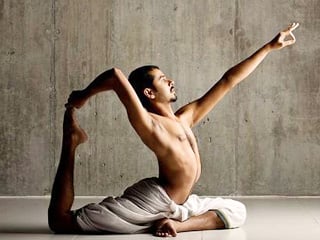
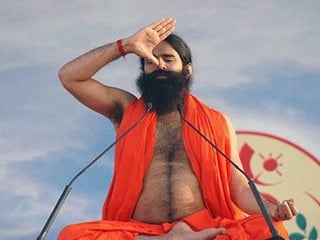 How does pranayam facilitate activation of the kundalini?
How does pranayam facilitate activation of the kundalini?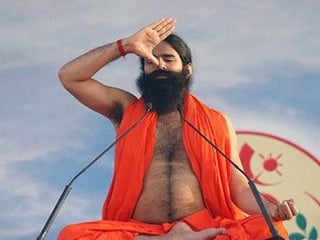 How to gain control over mind by practicing pranayam?
How to gain control over mind by practicing pranayam?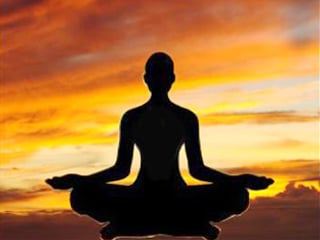 Righteousness - key to control desires
Righteousness - key to control desires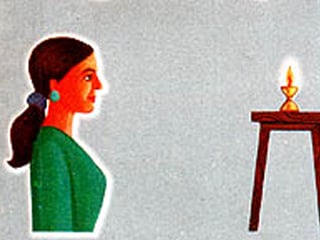 How does tratak help in increasing ones sattvikta?
How does tratak help in increasing ones sattvikta?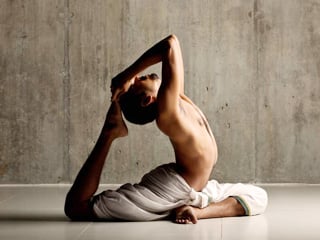 What is the motive behind enduring pain in Hathayoga?
What is the motive behind enduring pain in Hathayoga?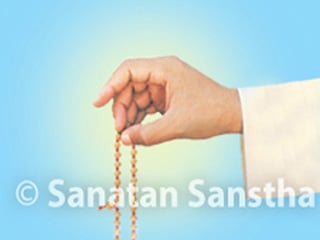 Chanting of Lord's Name: Best tool for observing silence ( maun vrat )
Chanting of Lord's Name: Best tool for observing silence ( maun vrat )